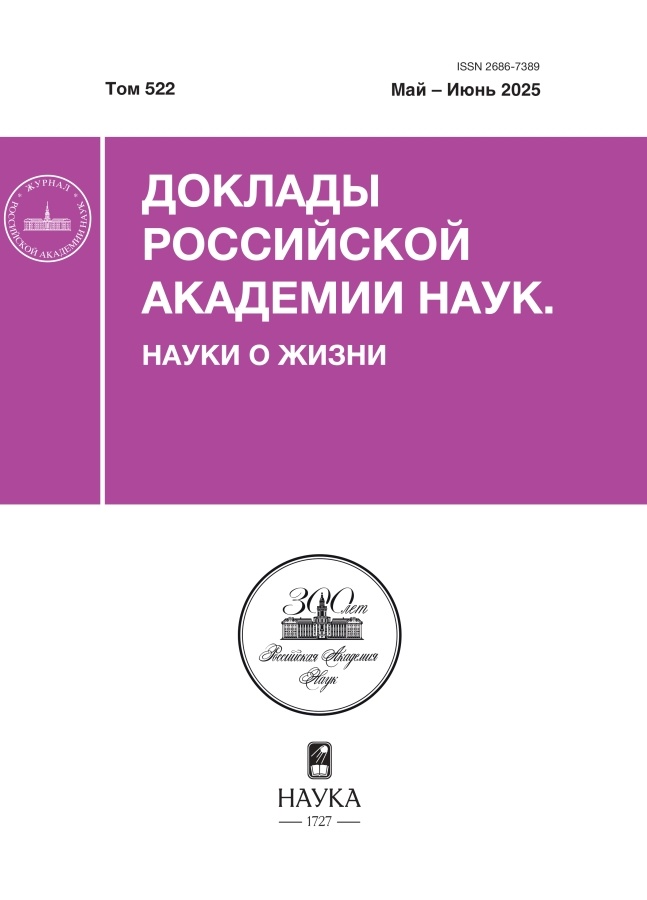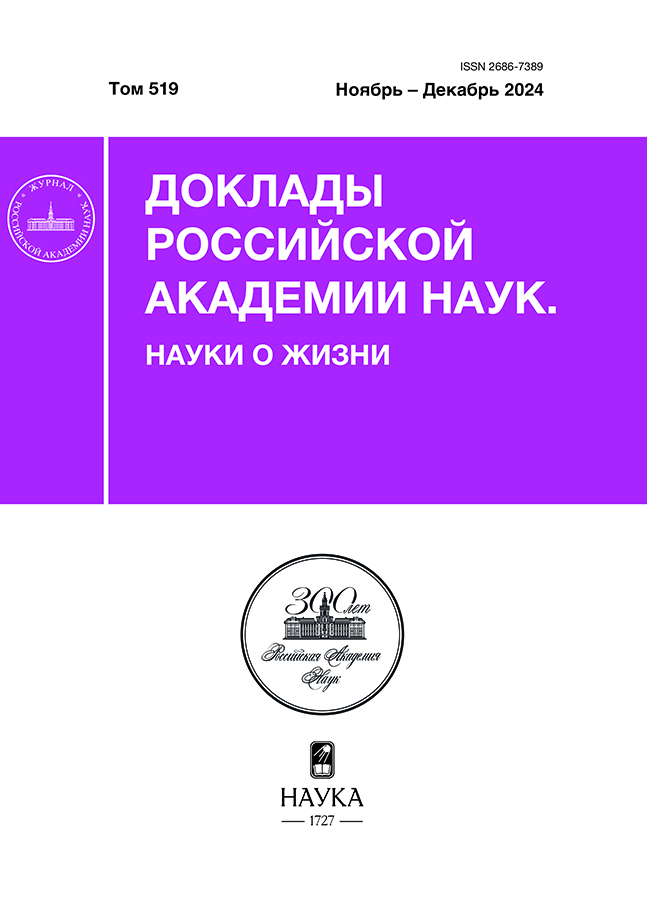Развитие антибиотикорезистентности у пробиотического штамма... Lactiplantibacillus plantarum 8P-A3 сопровождается изменениями структуры внеклеточных везикул и характера их влияния на бактериальные биопленки
- Авторы: Чернова О.А.1, Каюмов А.Р.2, Маркелова М.И.1,2, Сальников В.В.1, Кутырева М.П.2, Ханнанов А.А.2, Федорова М.С.2, Журавлева Д.Э.2, Баранова Н.Б.1,2, Файзуллин Д.А.1, Зуев Ю.Ф.1, Чернов В.М.1
-
Учреждения:
- Казанский институт биохимии и биофизики – обособленное структурное подразделение Федерального исследовательского центра “Казанский научный центр Российской академии наук”
- Казанский (Приволжский) федеральный университет
- Выпуск: Том 519, № 1 (2024)
- Страницы: 35-41
- Раздел: Статьи
- URL: https://archivog.com/2686-7389/article/view/651378
- DOI: https://doi.org/10.31857/S2686738924060059
- ID: 651378
Цитировать
Полный текст
Аннотация
Впервые показано, что развитие резистентности к антибиотикам (амоксициллину и кларитромицину) in vitro у пробиотического штамма Lactiplantibacillus plantarum 8p-a3, ассоциированное с крупномасштабными геномными перестройками, изменением профиля фенотипической чувствительности к антимикробным препаратам разных групп и эволюцией вирулентности, сопровождается также существенными изменениями внеклеточных мембранных везикул лактобациллы, транспортирующих липиды, полисахариды, белки и нуклеиновые кислоты. Изменения связаны со структурой и составом везикул, а также их активностью в отношении биопленок условно-патогенных бактерий. Полученные данные актуальны для понимания молекулярных механизмов выживания микроорганизмов в условиях селективного давления антимикробных препаратов, функционального потенциала везикул пробиотиков и оценки их безопасности.
Полный текст
Об авторах
О. А. Чернова
Казанский институт биохимии и биофизики – обособленное структурное подразделение Федерального исследовательского центра “Казанский научный центр Российской академии наук”
Email: kairatr@yandex.ru
Россия, Казань
А. Р. Каюмов
Казанский (Приволжский) федеральный университет
Автор, ответственный за переписку.
Email: kairatr@yandex.ru
Россия, Казань
М. И. Маркелова
Казанский институт биохимии и биофизики – обособленное структурное подразделение Федерального исследовательского центра “Казанский научный центр Российской академии наук”; Казанский (Приволжский) федеральный университет
Email: kairatr@yandex.ru
Россия, Казань; Казань
В. В. Сальников
Казанский институт биохимии и биофизики – обособленное структурное подразделение Федерального исследовательского центра “Казанский научный центр Российской академии наук”
Email: kairatr@yandex.ru
Россия, Казань
М. П. Кутырева
Казанский (Приволжский) федеральный университет
Email: kairatr@yandex.ru
Россия, Казань
А. А. Ханнанов
Казанский (Приволжский) федеральный университет
Email: kairatr@yandex.ru
Россия, Казань
М. С. Федорова
Казанский (Приволжский) федеральный университет
Email: kairatr@yandex.ru
Россия, Казань
Д. Э. Журавлева
Казанский (Приволжский) федеральный университет
Email: kairatr@yandex.ru
Россия, Казань
Н. Б. Баранова
Казанский институт биохимии и биофизики – обособленное структурное подразделение Федерального исследовательского центра “Казанский научный центр Российской академии наук”; Казанский (Приволжский) федеральный университет
Email: kairatr@yandex.ru
Россия, Казань; Казань
Д. А. Файзуллин
Казанский институт биохимии и биофизики – обособленное структурное подразделение Федерального исследовательского центра “Казанский научный центр Российской академии наук”
Email: kairatr@yandex.ru
Россия, Казань
Ю. Ф. Зуев
Казанский институт биохимии и биофизики – обособленное структурное подразделение Федерального исследовательского центра “Казанский научный центр Российской академии наук”
Email: kairatr@yandex.ru
Россия, Казань
В. М. Чернов
Казанский институт биохимии и биофизики – обособленное структурное подразделение Федерального исследовательского центра “Казанский научный центр Российской академии наук”
Email: kairatr@yandex.ru
Россия, Казань
Список литературы
- Gill S., Catchpole R., Forterre P. // FEMS Microbiol. Rev. 2019. V. 43,3. P. 273–303.
- Kim W., Lee E. J., Bae I. H., et al. // J. Extracell. Vesicles. 2020. V. 9,1. P. 1793514.
- Charpentier L.A., Dolben E.F., Hendricks M.R., et al. // Membranes. 2023. V. 13,9. P. 752.
- Dominguez Rubio A.P., D’Antoni C.L., Piuri O.E., et al. // Front. microbiol. 2022. V. 13. P. 864720.
- Krzyzek P., Marinacci B., Vitale I., et al. // Pharmaceutics. 2023. V. 15,2. P. 522.
- da Silva Barreira D., Laurent J., Lourenco J., et al. // Sci. Rep. 2023. V. 13,1. P. 1163.
- Mancino W., Lugli G. A., van Sinderen D., et al. // Microorganisms. 2019. V. 7,12. P. 638.
- Tardy L., Giraudeau M., Hill G. E., et al. // Proc. Natl. Acad. Sci. USA. 2019. V. 116,34. P. 16927–16932.
- Card K.J., Thomas M.D., Graves Jr.J.L., et al. // Proc. Natl. Acad. Sci. USA. 2019. V.118,5. P. e2016886118.
- Chernova O.A., Chernov V.M., Mouzykantov A.A., et al. // Int. J. Antimicrob. Agents. 2021. V. 57,2. P. 106253.
- Kostenko V.V., Mouzykantov A.A., Baranova N.B., et al. // Microbiol. Spectr. 2022. V. 10,3. P. e0236021.
- Chernov V.M., Chernova O.A., Mouzykantov A.A., et al. // Sci. World J. 2011. V. 11. P. 1120–1130.
- Burmatova A., Khannanov A., Gerasimov A., et al. // Polymers. 2023. V. 15,15. P. 3248.
- Zucchiatti P., Mitri E., Kenig S., et al. // Anal. Chem. 2016. V. 88,24. P. 12090–12098.
- Chernov V.M., Mouzykantov A.A., Baranova N.B., et al. // J. Proteom. 2014. V. 110. P. 117–128.
- Baidamshina D.R., Trizna E.Y., Holyavka, M.G., et al. // Sci. Rep. 2017. V.7. P. 46068
- Hobby C.R., Herndon J.L., Morrow C.A., et al. // Microbiologyopen. 2019. V. 8,2. P. e00635.
- Bai Y., Luo B., Zhang Y., et al. // Int. J. Biol. Macromol. 2021. V.185. P.1036–1049.
- Slavetinsky С., Hauser J., Cordula Gekeler C., et al. // eLife . 2022. 11:e66376.
- Arias-Rojas A, Arifah A, Angelidou G., et al. // PLoS Pathog. 2024. V.20,8. P. e1012462.
Дополнительные файлы















